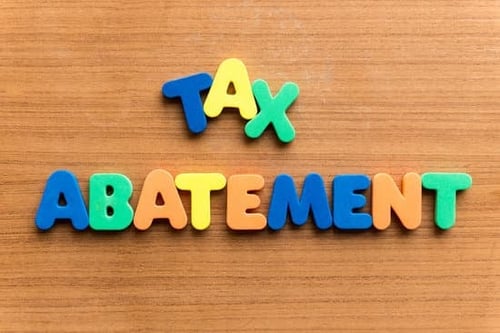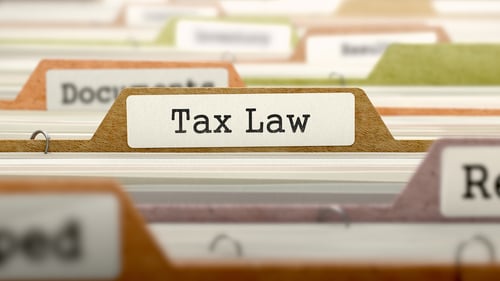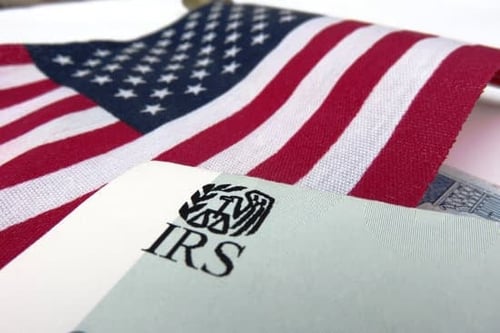Powell Tax Law Blog

401(k) Early Withdrawals Come with Taxes, Penalties & Lost Future Gains
The looming prospects of a recession in the U.S. later this year mean some Americans may eye their 401(k) retirement accounts as a cash lifeline, but experts caution against making early withdrawals before you reach age 59 ½.
“The good news: You can access your 401(k) funds before you turn 59 1/2, the IRA retirement age, through a process the IRS calls an “early withdrawal”,” explains Jean Folger and Paul Kim in Business Insider. “The bad news: An early withdrawal usually triggers a steep penalty in addition to taxes. You will also lose out on years of potential growth for your nest egg.”
Three Reasons You Should Not Raid Your 401(k) for Cash
Stefon Walters writing for The Motley Fool investment site says there are three main reasons you should not raid your 401(k) for cash before you reach the magic age of 59 ½:
- You Will Likely Get Hit with Early Withdrawal Penalties AND Taxes: Requesting $50,000 from your 401(k) account prior to the age of 59 ½ is not as easy as receiving a check for $50,000 because you will have to pay income tax on the pre-tax dollars, and you will likely also be hit with a 10 percent early withdrawal penalty from the IRS. Walters gives this eye-opening example of a taxpayer in the 24 percent income bracket:
The $50,000 withdrawal would be subject to a 10 percent early distribution tax = $5,000.
The $50,000 withdrawal would be subject to 24 percent income tax = $12,000.
The 401(k) account holder would only receive a check for $33,000 on the $50,000. withdrawal
- You Will Lose Any Potential Growth from the Funds Withdrawn: While an early withdrawal of $50,000, for example, may feel like $50,000 less come retirement, the financial hit is much worse as those funds will no longer be able to earn interest, dividends and grow with time. At a 7 percent rate of return per year (and 3 percent inflation annually), a $50,000 401(k) withdrawal at age 40 would mushroom to some $225,000 at age 70.
Says Walters: “When you withdraw early from your 401(k), don't just think about the immediate impact; consider the loss of the potential gains from the withdrawn money.”
- Do Not Withdraw Your 401(k) Cash When You Can Borrow It from Yourself: Some 401(k) plans allow account holders to borrow money (usually 50 percent of your vested amount up to $50,000) from the account as a loan. These loans must be paid back within five years. While you must repay the loan with interest, that interest goes into your 401(k) account, so you are paying yourself. And, more importantly, you will not be hit with income taxes or an early withdrawal penalty.
Exceptions to the 401(k) Early Withdrawal Tax Penalty
There are certain exceptions to the 401(k) early withdrawal tax penalty.
The IRS listed the following exceptions:
- Automatic Enrollment: Permissive withdrawals from a plan with auto-enrollment features. If the plan contains an eligible automatic contribution arrangement (EACA), it may allow an employee to withdraw automatic enrollment contributions. The employee must elect to withdraw automatic enrollment contributions within the time stated in the plan (30 - 90 days from when the employee first had any automatic enrollment contributions deducted). The employee must consider any pre-tax automatic enrollment contributions he withdraws as taxable income in the year in which they are distributed. The withdrawn amount is not subject to the additional 10% tax that normally applies to early distributions from retirement plans.
- Corrective Distributions: Corrective distributions (and associated earnings) of excess contributions, excess aggregate contributions, and excess deferrals, made timely. Timing matters as excess elective deferrals not distributed from a 401(k) plan by April 15 of the calendar year following the calendar year in which they were contributed will be taxed twice and may be subject to an additional 10 percent tax on early distributions.
- Death: After the death of the participant. A surviving spouse can defer withdrawals or withdraw from the 401(k) and they are exempt from the IRS early withdrawal penalty if their surviving spouse is younger than 59 ½ at the time of death.
- Disability: Total and permanent disability of the participant. The plan document will specify the terms and conditions that a person must meet to receive disability payments and will give instructions on how to apply for them.
- Domestic Relations: To an alternative payee under a Qualified Domestic Relations Order (QDRO). Smart Asset says that “Not to be confused with a divorce decree or property settlement, a qualified domestic relations order (QDRO) specifically recognizes an ex-spouse’s, or soon-to-be-ex-spouse’s, interest in the other spouse’s qualified retirement plan … One huge benefit of a QDRO is that it allows for early withdrawals from a 401(k) or other qualified retirement plans without incurring a penalty. As a result, if the plan allows it, an alternate payee can receive a lump sum or payments before they reach age 59.5 without a 10 percent IRS penalty.”
- Equal Payments: Series of substantially equal payments or SEPP. Business Insider says that “with SEPP, you withdraw a specific amount from your 401(k) every year for five years or until you turn 59 ½, whichever comes later. One catch: This account can't be the one you have at your current job — it must be one you've kept from a previous employer. Also, if you quit the SEPP plan early, you'll owe all the penalties, plus interest.”
- ESOP: Dividend pass-through from an ESOP. There is no 10 percent penalty if the ESOP is rolled over into an IRA, qualified retirement plan, or successor plan within 60 days after receiving the distribution.
- Levy: Because of an IRS levy of the plan.
- Medical: Amount of unreimbursed medical expenses. Distributions to the extent you have deductible medical expenses that exceed 7.5 percent of your adjusted gross income whether or not you itemize your deductions for the year.
- Military: Certain distributions to qualified military reservists called to active duty. Generally, these are distributions made to individuals called to active duty for at least 180 days after September 11, 2001.
- Rollovers: In-plan Roth rollovers or eligible distributions contributed to another retirement plan within 60 days.
- Separation from Service: The employee separates from service during or after the year the employee reaches age 55 (age 50 for public safety employees of a state, or political subdivision of a state, in a governmental defined benefit plan).
Some plans also allow for “hardship withdrawals”, which will allow you access to your money.
“Your plan may allow you to take a penalty-free withdrawal to meet an “immediate and heavy” financial need. Not all plans allow for such hardship withdrawals, and not all hardship conditions waive early withdrawal penalties. Be sure to speak with your HR department to see whether your situation might provide penalty-free hardship withdrawals,” says Forbes.
Bankrate says the following situations could qualify as a hardship under the 401(k) withdrawal rules:
- Unreimbursed medical expenses for you, your spouse, or dependents.
- Payments necessary to prevent eviction from your home or foreclosure on a mortgage of a principal residence. (Regular mortgage payments do not constitute a hardship.)
- Funeral or burial expenses for a parent, spouse, child, or other dependent.
- Purchase of a principal residence (down payment) or pay for certain expenses for the repair of damage to a principal residence.
- Payment of college tuition and related educational costs for the next 12 months for you, your spouse, dependents, or non-dependent children.
As with all complicated financial matters that involve the IRS, it is best to seek advice from a tax professional.







